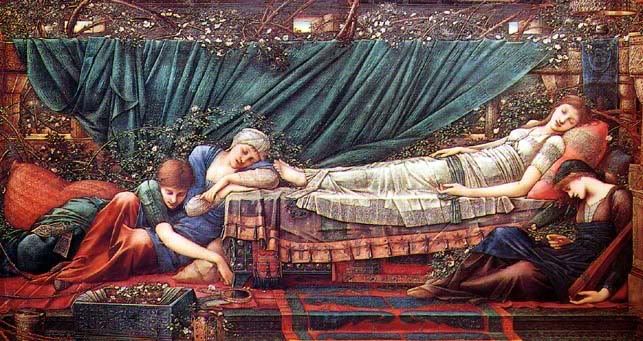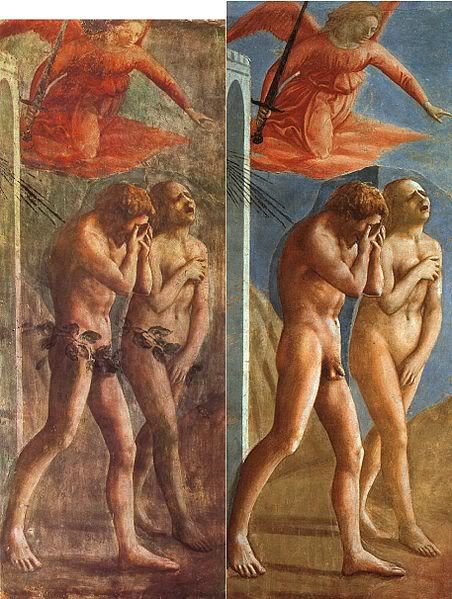I hope everyone had a lovely February. It was a very busy month for our family, and I'm hoping that March will be a change of pace!
In spite of the hustle and bustle, this Monday we finally had chance to visit the Art Gallery of Alberta for the first time in a long time, which was wonderful. This was my youngest daughters first visit to the gallery, and since we have two small children, we decided that Family Day (a holiday here in Alberta) would be a great day to attend. The reasons were twofold: first, the gallery would be noisy, so we wouldn't feel uncomfortable if the kids weren't quiet, and second, gallery admission is free on Family Day, so we wouldn't feel guilty about only seeing one exhibit!
The exhibit we took the girls to was Icons of Modernism, which runs from now until May 11, 2012 at the AGA. It featured approximately 15 works by artists such as Braque, Matisse, Cézanne, Francis Picabia, Ferdinand Léger, Dalí, Mondrian and Marcel Duchamp, together with a dozen or so of Picasso's sketches. It was interesting to see so many different works by modern painters and sculptors in one place, but it was also a bit strange for me to see them all laid out together...almost like opening an art history text to the chapter on modern art!
As inevitably happens when you try to distill an entire period of art into 15 or so works, the results necessarily felt a bit hurried. There was significant emphasis on the alienation and violence that gripped much of the world at the beginning of the 20th century and its manifestation in cubism, etc. But often there was only a a single work to represent movements like Surrealism, Futurism, Constructivism, etc., while the exhibit had at least a dozen of Picasso's sketches and two major works by Dadaist Marcel Duchamp.
The works by Duchamp really stole the show, in my opinion. I'm sure this was at least partially the intention of the curator who chose them. Somehow, after seeing the grim works that preceded them, Duchamp felt like a breath of fresh air. My two year old daughter was utterly blown away by the wooden hat rack dangling from the ceiling (the shadow that it cast on the wall was quite transfixing as well).
Now, she is two, so of course conceptual art is going to be a hit with her! Nevertheless, I came away thinking that it's probably far more stimulating to see one of Duchamp's readymades when you are surrounded by more traditional pieces. Looking at a piece like his Bicycle Wheel on a Stool can be quite refreshing, especially after seeing so many works that force you to contemplate the harsh realities of war and the less promising aspects of the modern age.
Wednesday, February 22, 2012
Icons of Modernism at the Art Gallery of Alberta
Posted by
Margaret
at
3:36 PM
3
comments
![]()
![]()
Labels: art gallery of alberta, modern art
Call for Submissions: March Issue of the Art History Carnival
The March edition of the Art History Carnival will be posted on Thursday, March 1, 2012. You can submit articles for inclusion in the carnival until 48 hours before the issue is "released" (Tuesday, February 28, 2012).
What kind of blog articles will be included?
Posts covering all periods and art mediums are welcome, as are posts discussing art criticism, architecture, design, theory and aesthetics. All submissions will be carefully reviewed, so please, no spam.
What is a Blog Carnival?
According to Wikipedia, a blog carnival is "a type of blog event...similar to a magazine, in that it is dedicated to a particular topic, and is published on a regular schedule, often weekly or monthly. Each edition of a blog carnival is in the form of a blog article that contains permalinks links to other blog articles on the particular topic."
Blog Carnivals are a great way to help your blog reach a new audience and to make new friends in the blogosphere!
Who can submit?
Anyone, as long as you have a blog! And If you don't blog, you can submit one of your friend's articles (except they better be good--I'll be reading them!).
Can I host a carnival?
Absolutely! Please let me know if you'd be interested in hosting the next issue of the carnival.
How to submit articles
You have two options:
1. Use the submission form provided by Blog Carnival (this is easiest!).
2. Send me an email. Include the title and permalink URL of the post you are nominating for inclusion in the carnival, along with the name of the blog. Please put "Art History Carnival" in the title of your email to help me recognize it in my inbox!
One final thing to keep in mind:
To keep things current, posts should have been written after the date of the last Carnival. If a post is six months old, I won't be able to include it in the Carnival, no matter how fabulous it might be (I had to exclude a friend from last month's Carnival for this very reason - I hated doing it, but I really feel it's important that the pieces be up-to-date!).
Thank you again for your participation, and please share the news with other bloggers!
Posted by
Margaret
at
2:24 PM
0
comments
![]()
![]()
Labels: blog carnival
Wednesday, February 1, 2012
Art History Carnival February 2012
art mysteries
Everyone knows that art history mysteries are exciting, especially when an undiscovered masterpiece might be involved. It's all very intriguing, but there is a lot of work involved in establishing the provenance of an artwork, as our first article shows. H Niyazi of Three Pipe Problem presents The circular fortunes of the von Baden Madonna saying, "Little known outside specialist circles, a panel painting depicting a Madonna and Child in a Landscape has been forwarded as a possible early work by none other than Raphael. In an exclusive presentation, 3PP examines the stylistic and technical evidence related to this piece, including an intriguing smaller version of it." This piece is a must-read for anyone who enjoys following art auctions, and the painting itself is truly lovely. It sold for $290k USD at auction, which I venture to say was a bargain, no matter who painted it.
the sands of time
If finding hidden masterpieces is one of the most thrilling aspects of art history, then one of the most frustrating surely has to be the sheer volume of information that is lost each year to decay. The next two blog posts examine how time has removed much of the evidence for artworks, and how technology might be able to help us better envision how these works might have appeared in the past.Christian Opitz of L'Historien Errant presents Giotto's Frescos in Naples (Lost Artworks #1), noting that "Giotto or non-Giotto, today the bare white walls of both Santa Chiara and the Cappella Magna are striking reminders of just how much great 14th century art has been lost in Naples alone."
Fortunately, science and history have been able to help us to reconstruct artworks so that we can better understand how they might have appeared in the past. Christina Daniel, whose blog Daydream Tourist focuses on art and travel, discusses the digital reconstruction of the Duccio's Maesta, concluding that "The Maestà demonstrates that reconstruction, at least digitally, goes a long way in understanding the artist’s intentions, the work’s visual impact, and how contemporary viewers would have encountered the piece."
design
What might Leonardo's interest in storms have to do with the art in video games? "Like Leonardo’s study of fluid dynamics, programmers needed to understand particle physics (as well as fluid dynamics) in order to create game engines capable of natural weather effects." Glennis McGregor explores Leonardo's legacy in the gaming world in Natural Systems: Leonardo's Energy Charge posted at her delightful blog, Renaissance for Real.
art motifs and censorship
Sleeping Beauty slept for 100 years, Snow White slept until Prince Charming woke her up, and the heroine "Bella" in the Twilight series falls asleep every five minutes (while her vampire lover Edward looks on).Ever notice that women spend an awful lot of time sleeping in books...and in art? Heidenkind aka Tasha B. explores the "narcoleptic heroine phenomenon" in her post The Girl Who Slept posted at Truth, Beauty, Freedom, and Books.
Another common theme in art(particularly in Victorian art, although I've probably noticed it more there because that's the subject area I'm most familiar with)is the rather questionable portrayal of young girls. Kirsty Stonell Walker, author of "Stunner: the fall and rise of Fanny Cornforth" and The Kissed Mouth has done an excellent two post series on the subject that begins with a nuanced examination of Victorian childhood (and girlhood in particular) in a post entitled "Thank Heavens for Little Girls." It's definitely worth a read!
While images of sleeping women never seem to raise too many alarm bells, and the odd inappropriate gaze towards young children is often ignored, the humble nude has caused quite a bit of controversy throughout art history. I still remember when my University ordered a cherub fountain for the garden next to our library. It had the most ridiculous little ribbon awkwardly draped around its nether regions. The effect was patently ridiculous. I always wondered how the artist must have felt! (and if the University was so offended by nude art, why did they choose a cherub in the first place?). And censorship often backfires, raising more eyebrows and drawing more attention to the matter than it would if artists were left to themselves.
Monica Bowen's piece The Prude Nude: Censorship and Cover-Ups in Art posted at Alberti's Window highlights the irony of censorship, noting that "In many respects, one can argue that these “cover-ups” ended up having a reverse effect than what was intended. Even the outcries against nudity just cause people to focus on the naked figures even more."
background
I love art history, but I must confess that I often feel a bit lost whenever I venture outside the Arts and Crafts/Pre-Raphaelite movements. The Renaissance period can be particularly challenging, due to the sheer wealth of work created during that time. Susan Benford offers an excellent overview of some of the leading artists of the Renaissance in her Survey of Renaissance Paintings posted at Famous Paintings Reviewed - An Art History BlogThat concludes this edition. Submit your blog article to the next edition of
art history carnival
using our
carnival submission form.
Past posts and future hosts can be found on our
blog carnival index page.
Technorati tags:
art history carnival, blog carnival.
Posted by
Margaret
at
5:02 AM
3
comments
![]()
![]()
Labels: blog carnival




